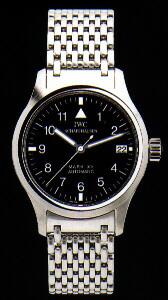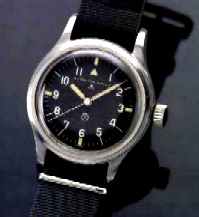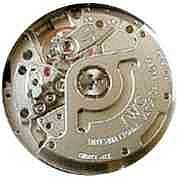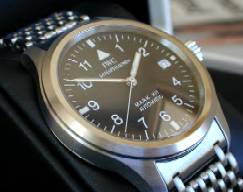 The
Mark XII is more than a watch; it is an homage to the tradition
of fine Swiss watchmaking. It salutes military
watches; it salutes flight watches and it salutes the heritage of International Watch Company. The Mark XII
represents a synthesis of design and execution, both as a watch of the 90s and as a timeless classic.
The
Mark XII is more than a watch; it is an homage to the tradition
of fine Swiss watchmaking. It salutes military
watches; it salutes flight watches and it salutes the heritage of International Watch Company. The Mark XII
represents a synthesis of design and execution, both as a watch of the 90s and as a timeless classic.In some ways, the Mark XII is the ordinary watch par excellence. Its design is simple, discrete and nearly minimalist. It has no special functions or complications unless one considers a date as something beyond ordinary. It is certainly not a pure dress watch, nor is it intended to be a true sports watch. Yet its style approaches perfection, its execution is excellent, and its pedigree is beyond reproach.
To appreciate the Mark XII fully requires an understanding of its heritage. IWC historically produced many notable military watches, including models that were ancestors to the Mark XII. These predecessors were made to the specifications of the British Ministry of Defense, and included the rare Mark IX from the 1930s and the Mark X in the 1940s. Soon after World War II, IWC created its first megastar, the Mark XI.
 The Mark XI was designed to meet military requirements, but it did so with Úlan. Powered by IWC's now famous
Calibre 89 manual-wind movement and with antimagnetic shielding, the watch was durable, accurate and legible.
The Mark XI was designed to meet military requirements, but it did so with Úlan. Powered by IWC's now famous
Calibre 89 manual-wind movement and with antimagnetic shielding, the watch was durable, accurate and legible.Despite its utilitarian attributes, its beautiful style --a perfectly designed and then executed dial and case-- made the watch a design triumph. Produced initially for Royal Air Force use, the Mark XI evolved into a legend.
After more than 30 years of production, the Mark XI finally succumbed. A finely wrought, mechanical, military watch became an anachronism. However, during the late 1980s, IWC introduced a few new models with military-style dials. But the greatest rebirth occurred in 1994, when IWC introduced the Mark XII.
During a time when there was a growing interest in fine mechanical watches, the Mark XII extended the concept of the Mark XI to the 1990s. The Mark XII can be considered the blueprint for the basic, fine mechanical watch during that decade.
 The Mark XII fulfilled the classical dictum of a sound mind in a sound body. Its movement, IWC Calibre 884/2, was
an IWC-finished Jaeger LeCoultre Calibre 889/2. It was a thin automatic movement with a height of 3.25 mm. The
well-reputed movement had 36 jewels and ran at 28,800 beats per hour. The case was classically proportioned at
36mm in diameter. There was a subtlety and finesse to the case, with perfect edges and meticulous polishing.
The Mark XII fulfilled the classical dictum of a sound mind in a sound body. Its movement, IWC Calibre 884/2, was
an IWC-finished Jaeger LeCoultre Calibre 889/2. It was a thin automatic movement with a height of 3.25 mm. The
well-reputed movement had 36 jewels and ran at 28,800 beats per hour. The case was classically proportioned at
36mm in diameter. There was a subtlety and finesse to the case, with perfect edges and meticulous polishing. The Mark XII both echoed the current interest in mechanical watches and also reflected a rich heritage. Contrary
to growing interests in more complicated watches, as well as over-sized watches, the Mark XII got back to basics.
In doing so, it spawned a host of new military-styled watches by other manufacturers. Yet the utterly simple Mark
XII can claim to be the watch that launched a whole trend and the rightful heir to an entire tradition.
The Mark XII both echoed the current interest in mechanical watches and also reflected a rich heritage. Contrary
to growing interests in more complicated watches, as well as over-sized watches, the Mark XII got back to basics.
In doing so, it spawned a host of new military-styled watches by other manufacturers. Yet the utterly simple Mark
XII can claim to be the watch that launched a whole trend and the rightful heir to an entire tradition.
